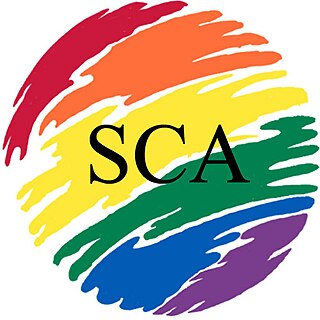Computer addiction is a form of behavioral addiction that can be described as the excessive or compulsive use of the computer, which persists despite serious negative consequences for personal, social, or occupational function. Another clear conceptualization is made by Block, who stated that "Conceptually, the diagnosis is a compulsive-impulsive spectrum disorder that involves online and/or offline computer usage and consists of at least three subtypes: excessive gaming, sexual preoccupations, and e-mail/text messaging". Computer addiction is not currently included in the Diagnostic and Statistical Manual of Mental Disorders (DSM-5) as an official disorder. The concept of computer addiction is broadly divided into two types, namely offline computer addiction, and online computer addiction. Offline computer addiction is normally used when speaking about excessive gaming behavior, which can be practiced both offline and online. Online computer addiction, also known as Internet addiction, gets more attention in general from scientific research than offline computer addiction, mainly because most cases of computer addiction are related to the excessive use of the Internet.
Hypersexuality is a term used for a presumed mental disorder which causes unwanted or excessive sexual arousal, causing people to engage in or think about sexual activity to a point of distress or impairment. It is controversial whether it should be included as a clinical diagnosis used by mental healthcare professionals. Nymphomania and satyriasis were terms previously used for the condition in women and men, respectively.
Pornography addiction is the scientifically controversial application of an addiction model to the use of pornography. Pornography may be part of compulsive sexual behavior with negative consequences to one's physical, mental, social, or financial well-being. While the World Health Organization's ICD-11 (2022) has recognized compulsive sexual behaviour disorder (CSBD) as an "impulsive control disorder", CSBD is not an addiction, and the American Psychiatric Association's DSM-5 (2013) and the DSM-5-TR (2022) do not classify compulsive pornography consumption as a mental disorder or a behavioral addiction.
Virtual sex is sexual activity where two or more people gather together via some form of communications equipment to arouse each other, often by the means of transmitting sexually explicit messages. Virtual sex describes the phenomenon, no matter the communications equipment used.

Reasons for opposition to pornography include religious objections and feminist concerns, as well as alleged harmful effects, such as pornography addiction. Pornography addiction is not a condition recognized by the DSM-5, or the ICD-11. Anti-pornography movements have allied disparate social activists in opposition to pornography, from social conservatives to harm reduction advocates. The definition of "pornography" varies between countries and movements, and many make distinctions between pornography, which they oppose, and erotica, which they consider acceptable. Sometimes opposition will deem certain forms of pornography more or less harmful, while others draw no such distinctions.
Impulse-control disorder (ICD) is a class of psychiatric disorders characterized by impulsivity – failure to resist a temptation, an urge, or an impulse; or having the inability to not speak on a thought. Many psychiatric disorders feature impulsivity, including substance-related disorders, behavioral addictions, attention deficit hyperactivity disorder, autism spectrum disorder, fetal alcohol spectrum disorders, antisocial personality disorder, borderline personality disorder, conduct disorder and some mood disorders.
According to proponents of the concept, sexual addiction, also known as sex addiction, is a state characterized by compulsive participation or engagement in sexual activity, particularly sexual intercourse, despite negative consequences. The concept is contentious; neither of the two major mainstream medical categorization systems recognise sex addiction as a real medical condition, instead categorizing such behavior under labels such as compulsive sexual behavior.
Sexual anorexia is a term coined in 1975 by psychologist Nathan Hare to describe a fear of or deep aversion to sexual activity. It is considered a loss of "appetite" for sexual contact, and may result in a fear of intimacy or an aversion to any type of sexual interaction. The term largely exists in a colloquial sense and is not presently classified as a disorder in the Diagnostic Statistical Manual.
Pedophilia is a psychiatric disorder in which an adult or older adolescent experiences a primary or exclusive sexual attraction to prepubescent children. Although girls typically begin the process of puberty at age 10 or 11, and boys at age 11 or 12, psychiatric diagnostic criteria for pedophilia extend the cut-off point for prepubescence to age 13. People with the disorder are often referred to as pedophiles.
Sexual obsessions are persistent and unrelenting thoughts about sexual activity. In the context of obsessive-compulsive disorder (OCD), these are extremely common, and can become extremely debilitating, making the person ashamed of the symptoms and reluctant to seek help. A preoccupation with sexual matters, however, does not only occur as a symptom of OCD, they may be enjoyable in other contexts.

Sexual Compulsives Anonymous (SCA) is a twelve-step program for people who want to stop having compulsive sex. SCA founding is attributed variously to 1982 in New York City and to 1973 in Los Angeles. Although the fellowship originally sought to address issues of sexual compulsion among gay and bisexual men, and this is still the fellowships predominant demographic, today the program is LGBT friendly, open to all sexual orientations, and there is an increasing number of women and heterosexual men participating. SCA meetings are most likely to be held in urban areas with larger gay and bisexual male populations. The majority of members are white, but vary in age and socioeconomic background. The only requirement for membership is a desire to stop having compulsive sex.
Compulsive buying disorder (CBD) is characterized by an obsession with shopping and buying behavior that causes adverse consequences. It "is experienced as a recurring, compelling and irresistible–uncontrollable urge, in acquiring goods that lack practical utility and very low cost resulting in excessive, expensive and time-consuming retail activity [that is] typically prompted by negative affectivity" and results in "gross social, personal and/or financial difficulties". Most people with CBD meet the criteria for a personality disorder. Compulsive buying can also be found among people with Parkinson's disease or frontotemporal dementia.

Pornography has been defined as any material in varying forms, including texts, video, photos or audio that is consumed for sexual satisfaction and arousal of an individual or partnership. The effects of pornography on individuals or their intimate relationships depend on the type of pornography used and differs from person to person. The consumption of Pornographic material could have both positive and negative outcomes.

Internet addiction disorder (IAD) can otherwise be referred to as problematic internet use or pathological internet use. It is generally defined as problematic, compulsive use of the internet, that results in significant impairment in an individual's function in various aspects of life over a prolonged period of time. Young people are at particular risk of developing internet addiction disorder, with case studies highlighting students whose academic performance plummets as they spend more and more time online. Some also experience health consequences from loss of sleep, as they stay up later and later to chat online, check for social network status updates or to further progress in a game.
Behavioral addiction, process addiction, or non-substance-related disorder is a form of addiction that involves a compulsion to engage in a rewarding non-substance-related behavior – sometimes called a natural reward – despite any negative consequences to the person's physical, mental, social or financial well-being. In the brain's reward system, a gene transcription factor known as ΔFosB has been identified as a necessary common factor involved in both behavioral and drug addictions, which are associated with the same set of neural adaptations.

Addiction is a neuropsychological disorder characterized by a persistent and intense urge to use a drug or engage in a behaviour that produces natural reward, despite substantial harm and other negative consequences. Repetitive drug use often alters brain function in ways that perpetuate craving, and weakens self-control. This phenomenon – drugs reshaping brain function – has led to an understanding of addiction as a brain disorder with a complex variety of psychosocial as well as neurobiological factors that are implicated in addiction's development. Classic signs of addiction include compulsive engagement in rewarding stimuli, preoccupation with substances or behavior, and continued use despite negative consequences. Habits and patterns associated with addiction are typically characterized by immediate gratification, coupled with delayed deleterious effects.
Robert Weiss is an American author, educator, and clinical expert in the treatment of adult intimacy disorders and related addictions. Weiss currently serves as Chief Clinical Officer of Seeking Integrity.
Compulsive sexual behaviour disorder (CSBD), is an impulse control disorder. CSBD manifests as a pattern of behavior involving intense preoccupation with sexual fantasies and behaviours that cause significant levels of psychological distress, are inappropriately used to cope with stress, cannot be voluntarily curtailed, and risk or cause harm to oneself or others. This disorder can also cause impairment in social, occupational, personal, or other important functions.

Wendy Maltz is an American sex therapist, psychotherapist, author, educator, and clinical social worker. She is an expert on the sexual repercussions of sexual abuse, understanding women's sexual fantasies, treating pornography-related problems, and promoting healthy sexuality. She has taught at the University of Oregon and, up until her retirement in 2016 from providing counseling services, was co-director with her husband, Larry Maltz, of Maltz Counseling Associates therapy practice in Eugene, Oregon.
NoFap is a website and community forum that serves as a support group for those who wish to give up pornography and masturbation. Its name comes from the slang term fap, referring to male masturbation. While reasons for this abstinence vary by individual, the main motivation cited is attempting to overcome addiction to pornography, or other compulsive sexual behaviours. Other reasons for abstinence include religious and moral reasons, self-improvement, and physical beliefs that are not supported by medicine.






